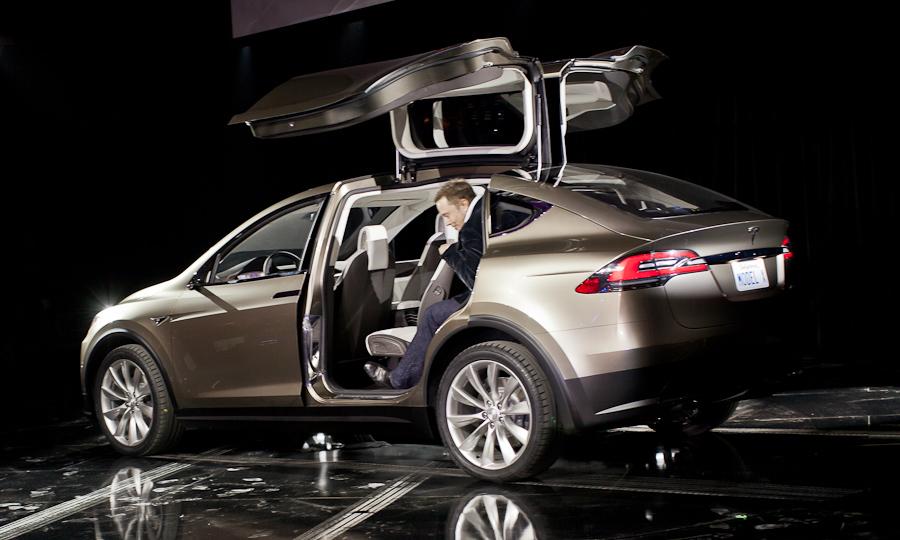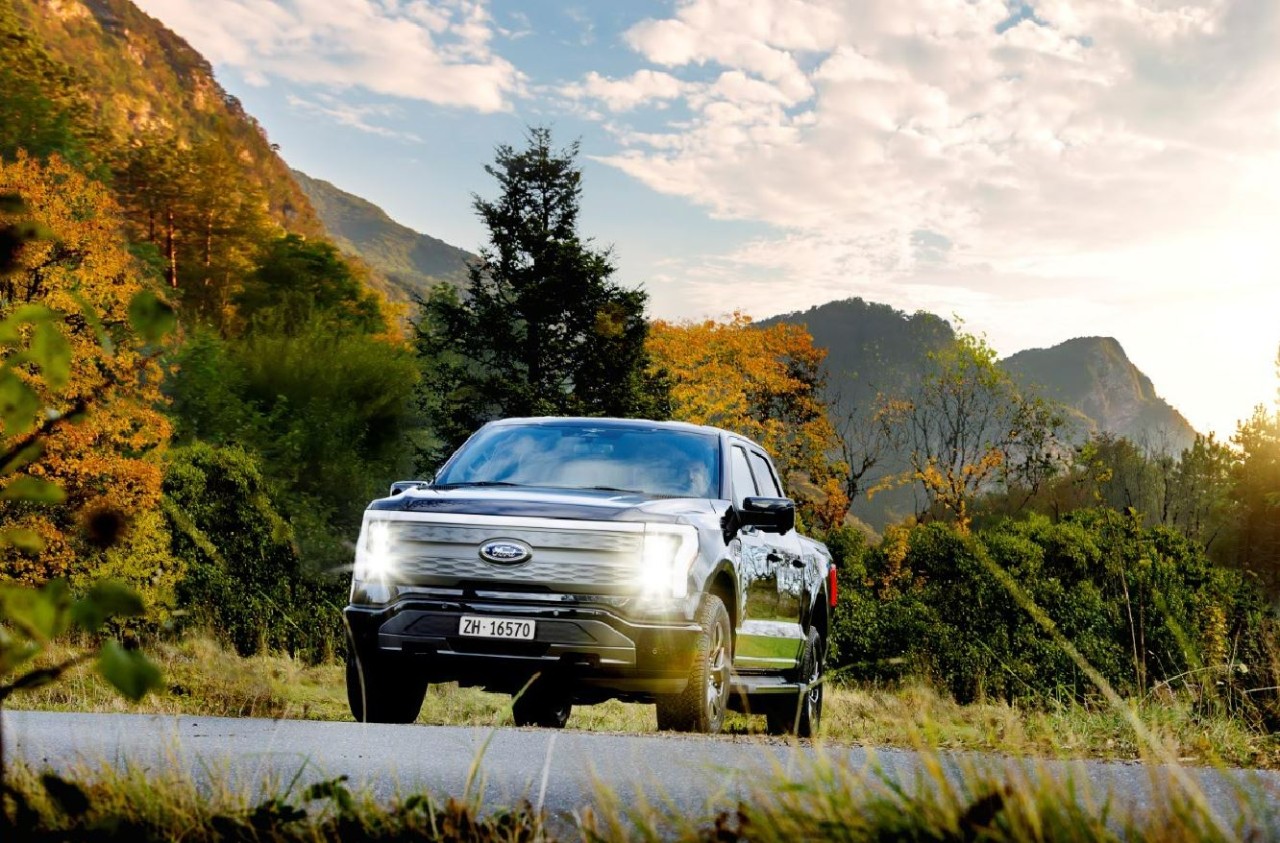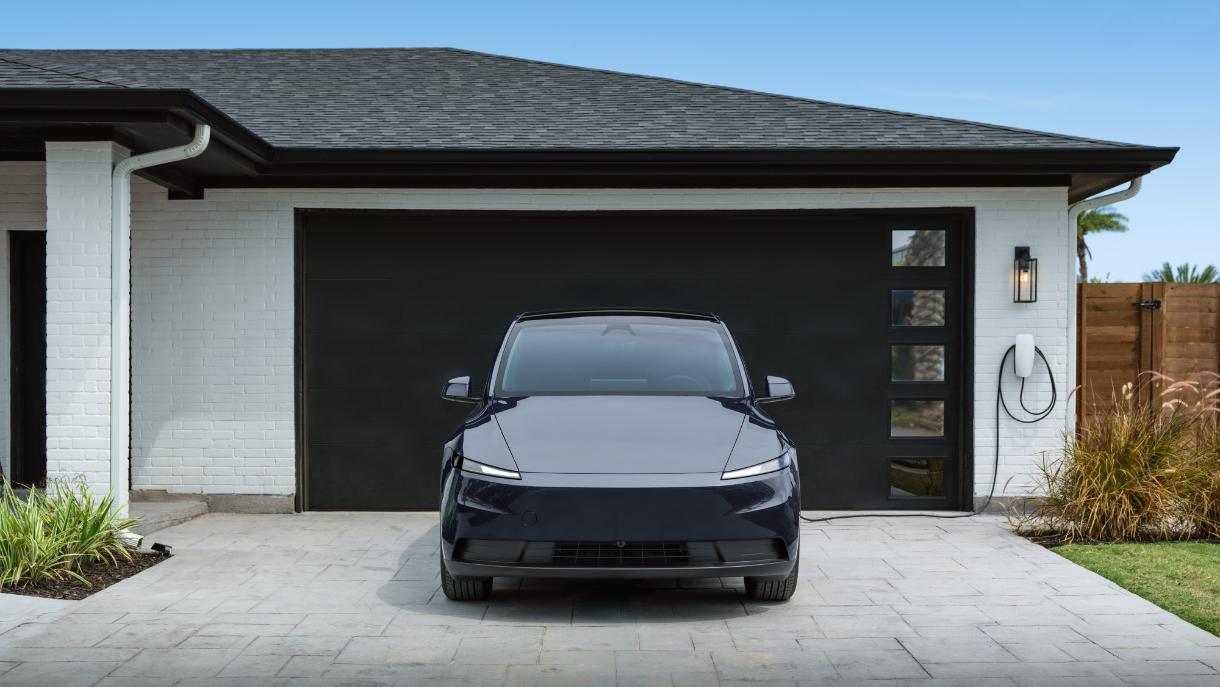News
Model X Production Delayed Until 2014

By BRADLEY BERMAN
The Tesla Model X at the 2013 Detroit auto show.Paul Sancya/Associated Press The Tesla Model X at the 2013 Detroit auto show.
Tesla Motors has confirmed that production of its all-wheel-drive Model X electric crossover will begin in late 2014, a year later than the company had originally announced. The revised timing was described in the company’s Form 10-K filed with the Securities and Exchange Commission last Thursday.
When Tesla first revealed the Model X in February 2012, the company said production would begin at the end of 2013, with deliveries following in 2014. Nearly a year later, at the Detroit auto show last January, Elon Musk, Tesla’s chief executive, made the first public statement about the shift in the schedule. Mr. Musk said production of the Model X would begin in the second half of 2014, according to Reuters.
While Tesla has been saying since the Detroit auto show in January that Model X production would begin in 2014, “our recent 10-K was the first written verification of that,” Shanna Hendricks, a Tesla spokeswoman, said in an e-mail.
“I almost have trouble calling this a delay in Model X, because that makes it sound like we’ve run into problems with Model X, and it’s taking longer than we thought, and it’s out of our control,” Ms. Hendricks wrote. “When, really, we’re consciously pushing back timing to allow ourselves to focus on its production and product enhancements in Model S.”
While Tesla did encounter production delays and problems with its first car, the Roadster, deliveries of the first Tesla Model S sedans were made in early June 2012, a few weeks earlier than originally projected. But in the first few months of Model S production, the company fell short of its own targets, delivering only about 250 cars. By the end of last year, the pace had picked up.
Converting customers with reservations into actual deliveries is critical for the company’s financial health. Tesla reported a fourth-quarter net loss of $81.5 million but says it expects to be profitable sometime in 2013. “We are very focused on achieving profitability and maintaining that profitability,” Ms. Hendricks said.
Tesla has not started putting alpha or beta versions of the Model X on the road for testing, Ms. Hendricks said. Tesla is “still finalizing the design prototype that has been on display at both Detroit and Geneva motor shows,” she wrote. The crossover’s most prominent design feature is the use of “falcon doors,” which are hinged at the top and rise like wings.
The Model X is built on the same platform as the Model S sedan. Tesla’s 10-K document provides this description of the Model X: “This unique vehicle has been designed to fill the niche between the roominess of a minivan and the style of an S.U.V., while having high-performance features such as a dual-motor all-wheel-drive system.”
Reservations for the standard Model X require a $5,000 deposit, while the Signature version requires a $40,000 deposit.
Prices for the Model X have not been announced. Tesla’s 10-K document states: “We anticipate that we will make Model X available with 60 kWh and 85 kWh battery pack options, with pricing of each version similar to those of a comparably equipped Model S.” Prices for the Model S sedan include a standard 60-kilowatt-hour version for $69,900 and an 85-kilowatt-hour model for $79,900. Many buyers are eligible for a $7,500 federal tax credit.
The company continues to state Model X production targets of 10,000 to 15,000 cars a year. There is still some wiggle room on the actual start of production with Mr. Musk stating “the second half of 2014” at the Detroit auto show while the S.E.C. documents state “late 2014.” Tesla’s Web site simply says, “Deliveries begin 2014.”

News
Ford cancels all-electric F-150 Lightning, announces $19.5 billion in charges
“Rather than spending billions more on large EVs that now have no path to profitability, we are allocating that money into higher returning areas, more trucks and van hybrids, extended range electric vehicles, affordable EVs, and entirely new opportunities like energy storage.”

Ford is canceling the all-electric F-150 Lightning and also announced it would take a $19.5 billion charge as it aims to quickly restructure its strategy regarding electrification efforts, a massive blow for the Detroit-based company that was once one of the most gung-ho on transitioning to EVs.
The announcement comes as the writing on the wall seemed to get bolder and more identifiable. Ford was bleeding money in EVs and, although it had a lot of success with the all-electric Lightning, it is aiming to push its efforts elsewhere.
It will also restructure its entire strategy on EVs, and the Lightning is not the only vehicle getting the boot. The T3 pickup, a long-awaited vehicle that was developed in part of a skunkworks program, is also no longer in the company’s plans.
Instead of continuing on with its large EVs, it will now shift its focus to hybrids and “extended-range EVs,” which will have an onboard gasoline engine to increase traveling distance, according to the Wall Street Journal.
“Ford no longer plans to produce select larger electric vehicles where the business case has eroded due to lower-than-expected demand, high costs, and regulatory changes,” the company said in a statement.
🚨 Ford has announced it is discontinuing production of the F-150 Lightning, as it plans to report a charge of $19.5 billion in special items.
The Lightning will still be produced, but instead with a gas generator that will give it over 700 miles of range.
“Ford no longer… pic.twitter.com/ZttZ66SDHL
— TESLARATI (@Teslarati) December 15, 2025
While unfortunate, especially because the Lightning was a fantastic electric truck, Ford is ultimately a business, and a business needs to make money.
Ford has lost $13 billion on its EV business since 2023, and company executives are more than aware that they gave it plenty of time to flourish.
Andrew Frick, President of Ford, said:
“Rather than spending billions more on large EVs that now have no path to profitability, we are allocating that money into higher returning areas, more trucks and van hybrids, extended range electric vehicles, affordable EVs, and entirely new opportunities like energy storage.”
CEO Jim Farley also commented on the decision:
“Instead of plowing billions into the future knowing these large EVs will never make money, we are pivoting.”
Farley also said that the company now knows enough about the U.S. market “where we have a lot more certainty in this second inning.”
News
SpaceX shades airline for seeking contract with Amazon’s Starlink rival

SpaceX employees, including its CEO Elon Musk, shaded American Airlines on social media this past weekend due to the company’s reported talks with Amazon’s Starlink rival, Leo.
Starlink has been adopted by several airlines, including United Airlines, Qatar Airways, Hawaiian Airlines, WestJet, Air France, airBaltic, and others. It has gained notoriety as an extremely solid, dependable, and reliable option for airline travel, as traditional options frequently cause users to lose connection to the internet.
Many airlines have made the switch, while others continue to mull the options available to them. American Airlines is one of them.
A report from Bloomberg indicates the airline is thinking of going with a Starlink rival owned by Amazon, called Leo. It was previously referred to as Project Kuiper.
American CEO Robert Isom said (via Bloomberg):
“While there’s Starlink, there are other low-Earth-orbit satellite opportunities that we can look at. We’re making sure that American is going to have what our customers need.”
Isom also said American has been in touch with Amazon about installing Leo on its aircraft, but he would not reveal the status of any discussions with the company.
The report caught the attention of Michael Nicolls, the Vice President of Starlink Engineering at SpaceX, who said:
“Only fly on airlines with good connectivity… and only one source of good connectivity at the moment…”
CEO Elon Musk replied to Nicolls by stating that American Airlines risks losing “a lot of customers if their connectivity solution fails.”
American Airlines will lose a lot of customers if their connectivity solution fails
— Elon Musk (@elonmusk) December 14, 2025
There are over 8,000 Starlink satellites in orbit currently, offering internet coverage in over 150 countries and territories globally. SpaceX expands its array of satellites nearly every week with launches from California and Florida, aiming to offer internet access to everyone across the globe.
Currently, the company is focusing on expanding into new markets, such as Africa and Asia.
News
Tesla Model Y Standard stuns in new range test, besting its Premium siblings
Tesla’s newer vehicles have continued to meet or exceed their EPA estimates. This is a drastic change, as every 2018-2023 model year Tesla that Edmunds assessed did not meet its range estimates.

The Tesla Model Y Standard stunned in a new range test performed by automotive media outlet Edmunds, besting all of its Premium siblings that are more expensive and more luxurious in terms of features.
Testing showed the Model Y Standard exceeded its EPA-estimated range rating of 321 miles, as Edmunds said it is the “longest-range Model Y that we’ve ever put on our loop.” In the past, some vehicles have come up short in comparison with EPA ranges; for example, the Model Y’s previous generation vehicle had an EPA-estimated range of 330 miles, but only drove 310.
Additionally, the Launch Series Model Y, the first configuration to be built in the “Juniper” program, landed perfectly on the EPA’s range estimates at 327 miles.
It was also more efficient than Premium offerings, as it utilized just 22.8 kWh to go 100 miles. The Launch Series used 26.8 kWh to travel the same distance.
It is tested using Edmunds’ traditional EV range testing procedure, which follows a strict route of 60 percent city and 40 percent highway driving. The average speed throughout the trip is 40 MPH, and the car is required to stay within 5 MPH of all posted speed limits.
Each car is also put in its most efficient drive setting, and the climate is kept on auto at 72 degrees.
“All of this most accurately represents the real-world driving that owners do day to day,” the publication says.
With this procedure, testing is as consistent as it can get. Of course, there are other factors, like temperature and traffic density. However, one thing is important to note: Tesla’s newer vehicles have continued to meet or exceed their EPA estimates. This is a drastic change, as every 2018-2023 model year Tesla that Edmunds assessed did not meet its range estimates.
Tesla Model Y Standard vs. Tesla Model Y Premium
Tesla’s two Model Y levels both offer a great option for whichever fits your budget. However, when you sit in both cars, you will notice distinct differences between them.
The Premium definitely has a more luxurious feel, while the Standard is stripped of many of the more premium features, like Vegan Leather Interior, acoustic-lined glass, and a better sound system.
You can read our full review of the Model Y Standard below:
Tesla Model Y Standard Full Review: Is it worth the lower price?








